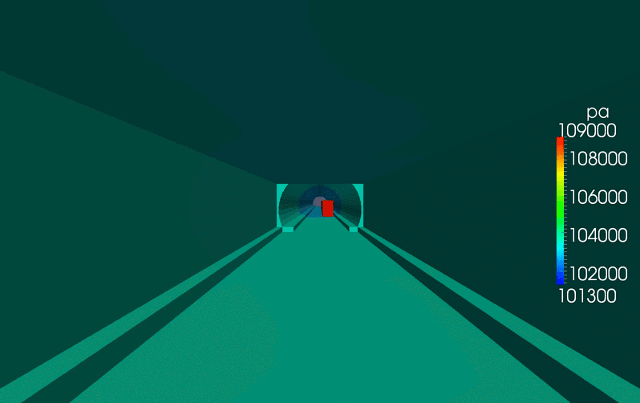
Train in tunnel
A CFD study where train in tunnel is passing sudden change in tunnels cross-section
In summer 2012 we have challenged the following case: There was a need of a cfd simulation of a train which is driving through the railroad tunnel. This description may sound like a piece of cake for experienced CFD engineer until one learns the tunnel was specific.
Tunnel’s length was 1000M and its cross-section has suddenly changed in the middle. In the first 500M of the tunnel length the tunnel cross-section was a circle, but in the other 500M tunnel cross-section was a square.
Following simplified model shows short animation of the case:

This was a typical representative of those cases which have very simple input, but are very complicated to solve.
Classical CFD methods follow Eulerian approach that means certain area is followed and Navier-Stokes equations together with boundary conditions are solved inside this area.
For example imagine a water flow in a pipe. The fluid is moving inside the pipe. The followed area is the pipe. The flow comes in and out. The computational mesh is created one time and fluid motion is simulated using boundary conditions.
Problems come whenever the followed objects start moving. For some ‘nice’ class of cases one can employ relative motions. For example car on the road (or in the aerodynamic tunnel). For other class of cases with rotational motion one can employ reference frames,AMI (GGI), sliding meshes or even multiregioning. For example some propeller or a turbine.
But considering pure unsteady (transient) non-periodic flow with moving object, the new computational mesh usually has to be created (or updated) each time step.
This bring us back to the train case. The train is moving. The environment is not somehow symmetric. This looks no good for Eulerian approach, or does it?
Please contact us for further information.
